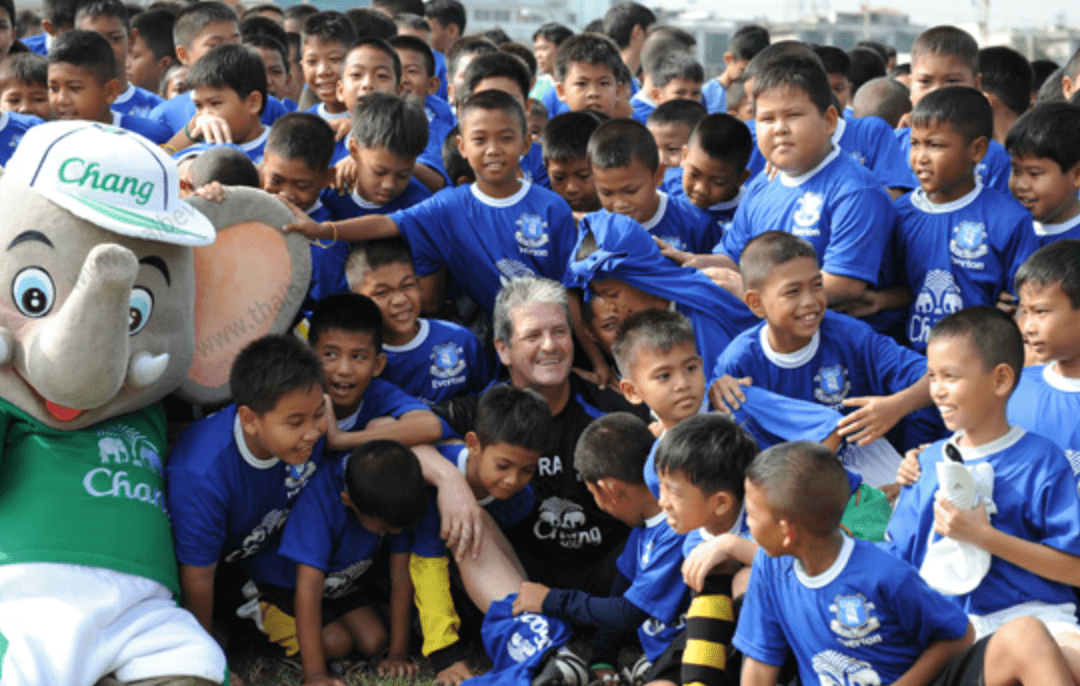Advertising for alcoholic beverages in the mass media may be the most noticeable form of alcohol marketing but it represents only part of the picture. “Below the line” marketing, such as point-of-sale promotions or merchandising, the use of other products connected with alcohol brands, sponsorship, or alcohol advertising in online media have only recently received research attention.
A Child Rights issue
Alcohol marketing targeting children and youth is a violation of their rights enshrined in the UN Convention on the Rights of the Child.
Children and youth have the right to grow up in a healthy environment, to be protected from being hurt, from receiving harmful information and from any kind of exploitation.
Targeted marketing by the alcohol industry to children and youth violates these rights.

Chang beer targeting children
A child protection issues
Consider this example: The majority of Irish children are regularly exposed to alcohol advertising and marketing.
Significant exposure to alcohol marketing increases the likelihood that children will use alcohol, binge use and engage in risky behavior. 90% of Irish children were exposed to “traditional” or off-line advertising in the week prior to the study, with more than 50% of those surveyed citing four or more such advertisements a day. 77% reported online exposure and 61% owned alcohol-branded merchandise.
More than half of Irish children (53.5%) between the ages of 13 and 15 had previously consumed alcohol.



